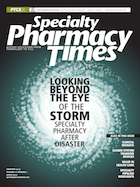Publication
Article
Specialty Pharmacy Times
How Can We Advance Progress in Moving From Volume to Value in Health Care?
It is critical that we continue to recognize that better health outcomes are a critically important corollary to value.
Looking ahead to 2019, it appears that many of the health care issues that rose to prominence in 2018 will continue to be front and center. The Trump administration is pressing ahead with the US Department of Health & Human Services (HHS) blueprint to lower drug prices and reduce out-of-pocket costs, and both the newly elected and reelected members of Congress have pledged to keep up the pressure on health care spending, with a particular focus on biopharmaceuticals. The actions taken during the next few months could affect the future of the American health care system in both the short and long term.
Rather than trying to score news headlines, however, what we need is a thoughtful, research-based approach to tackle the challenges ahead of us. Health care spending reached 18% of gross domestic product in 2018 and is expected to increase unabated, but focusing the majority of the policy energy on just 1 sector of our health care economy is not the answer. In fact, the rate of prescription medicine spending has grown less than 1.5% year to year, making it among the slowest-growing components of the health care economy. Focusing just on innovative prescription medicines will do little to curb the overall cost of health care in the country.
The National Pharmaceutical Council (NPC) is focused on a research-based approach in addressing cost and spending issues in the United States. In our response to HHS’ request for information on the blueprint, we emphasized that solutions must be grounded in strong evidence and analysis that recognizes the interconnectedness of health care spending.
In our comments, we also highlighted value assessment, an area that is still evolving in this country as diverse organizations wrestle over frameworks and approaches. Our work at NPC has focused on ensuring that value assessments follow sound methodological practices to ensure that they are effective tools to support value in patient care and outcomes and are not barriers to treatments.
Our work also has focused on taking a thoughtful approach to innovation, con- sidering how best to both optimize health care spending so that patients receive the right care and provide the right incentives to sustain next-generation innovation. Our responses to the blueprint and other pro- posed legislative and regulatory changes keep these main tenets front and center.
HHS asked for information on changes intended to further 3 main goals: increasing competition, improving negotiation, and reducing patient out-of-pocket spending. The NPC sees recent FDA guidance on the exchange of health care economic information (HCEI) as an encouraging step toward increasing competition. HCEI shared between biopharmaceutical companies and payers can enable outcomes-based agreements and value-based contracts, potentially powerful tools in targeting therapy to the right patients and reducing heath care costs. A study NPC conducted with Xcenda found that payers want multiple types of information, but their current decision making is limited by the available data. Payers believe the benefits of broader communication outweigh the potential harms and that improved information can result in better patient outcomes and potentially lower costs. NPC also recognizes the importance of reducing the impact of rebates while ensuring that patients capture the value of rebates.
Negotiation can be improved by employing the levers of outcomes-based agreements, but further regulatory action is needed to encourage value-based contracting by eliminating barriers. Currently, market uncertainty around the Anti-Kickback Statute and Medicaid pricing structures seems to inhibit value-based contracting and the sharing of economic models.
The HHS blueprint also included a goal of reducing patient out-of-pocket spending. In the current environment, numer- ous studies have shown that when out-of-pocket expenses increase, medication adherence decreases. Under Medicare Part D, there is no cap on annual patient out-of-pocket expenses, leaving those beneficiaries, most of whom live on fixed incomes, incredibly vulnerable.
As we highlighted in our comments to HHS, value-based insurance design could change medicine for the better if grounded in a strong evidence base. It shifts the focus from how much we spend on health care to how well we spend it. We also see promise in variable cost sharing in pharmacy benefits, especially if patients encounter higher medication costs due to biological reasons rather than personal preference. Variable cost sharing can reduce out-of-pocket expenditures and thus help remove cost barriers and increase medication adherence.
It is critical that we continue to recognize that better health outcomes are a critically important corollary to value. Patient survival rates and improved well-being should drive our spending decisions: Health care dollars should be apportioned based on what brings the greatest benefit to patients.
Pharmaceuticals can help patients not only survive but also avoid lengthy, expen- sive hospital stays. A singular focus on expense type is misplaced. As increasing health care costs continue to put pressure on state budgets, we must focus on what matters to patients and works best, reducing low-value care and developing payment mechanisms for curative therapies.
In 2019 and beyond, the NPC is committed to continue steering the national conversation to value and taking a holistic view when it comes to how we spend our health care dollars. In our new research-based initiative, Going Below the Surface, we leverage a research-based approach to understanding the drivers of health care spending in the United States and bringing together stakeholders across sectors to understand what we receive for those investments.
If these and other research-based findings are used to guide and shape proposed legislative and regulatory changes, they will advance us on our journey from volume to value.







